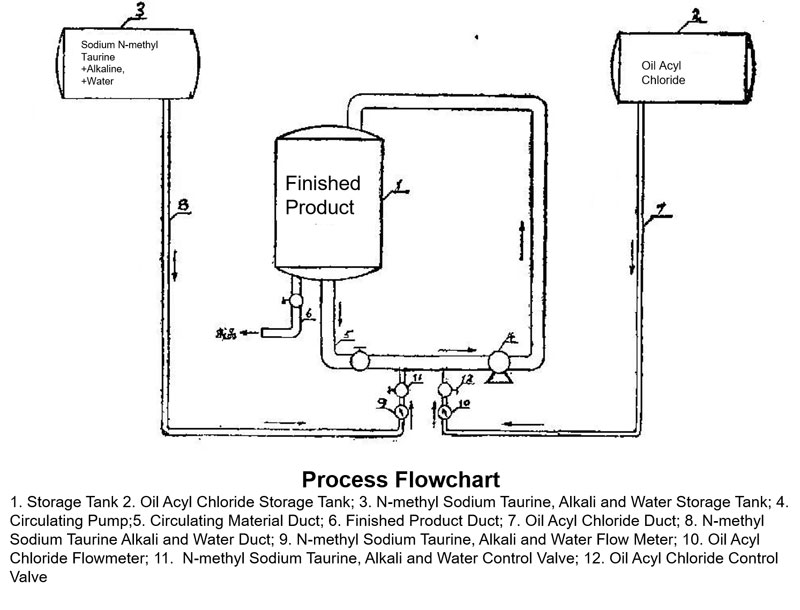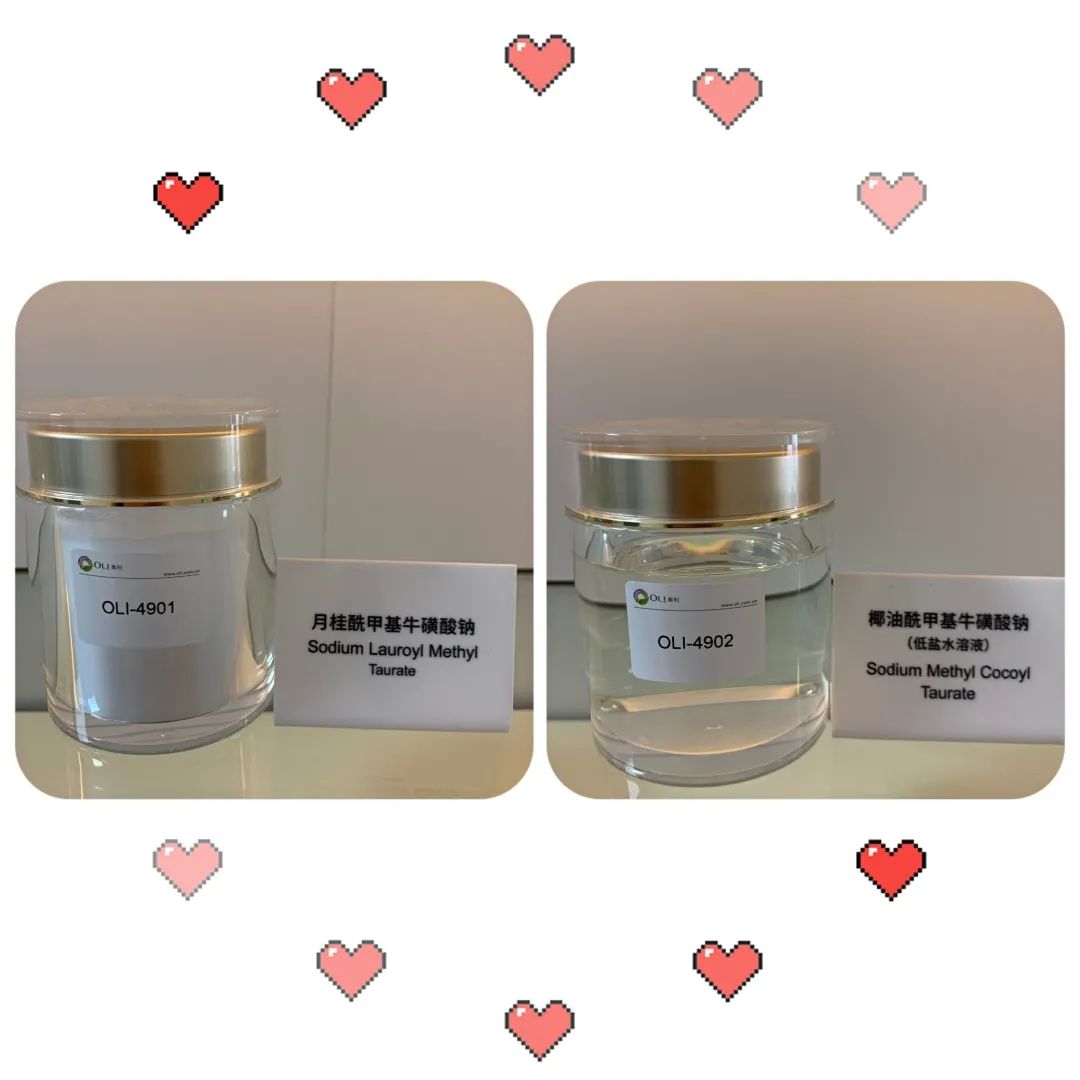



Characteristics of Fatty Acyl Methyl Taurine Sodium
● High foaming property, which can produce rich, delicate, and elastic foam
● Mild, selective degreasing
● Good skin feel, improving the sense of the use of the product, and does not tighten after washing
● It is easy to use and can be well dispersed in water at room temperature.
● Wide application range, stable in a wide range of PH values
● Hard water resistant, with good calcium soap dispersion
In 1932, the sodium Oleoyl Methyl Taurine was developed by a company in Germany for washing wool, namely, 1geponT.
In the 1950s, China's industrial base was relatively weak at the beginning of the founding of the People's Republic of China, and there was no self-produced detergent. Every year, our country needs to import about 100 tons of 1geponT to meet the needs of some departments with higher requirements.
In 1969, the Third Synthetic Detergent Factory of Shanghai actively responded to Chairman Mao's proposal that "we should have what foreign countries have, and we should also have what foreign countries do not", and decided to design its process and produce China's "1gepon T".
Under the leadership of Engineer Jiang Zhijie, Shanghai No. 3 Synthetic Detergent Factory broke the superstition of high pressure and high-temperature reaction, designed and installed a sodium N-methyl taurine synthesis unit for high temperature and high-pressure reaction, and a single pot intermittent reaction unit with an annual output of 200 tons of Sodium Oleoylmethyl Taurine (i.e. 1geponT), which was officially put into operation in the first spring of the 1970s [1]. Since it was the 20th anniversary of the founding of the People's Republic of China and the 9th National Congress of the Communist Party of China was also held in this year, these two figures were selected and named "209 Detergent".
In 1978, the spring breeze of reform and opening-up was blowing all over China, and the engineers represented by Jiang Zhijie also re-invested in scientific research and production. The technical reform team of Shanghai No. 3 Detergent Factory carried out technical innovation against the shortcomings of 209 detergent single pot intermittent synthesis method and invented the continuous shrinking method. The process flow chart is as follows [2].

Continuous condensation reaction also largely outperforms traditional one pot intermittent reaction:
One pot intermittent reaction
● The high content of impurities (Oleic Acid Soap) in the finished product makes 209 detergent very viscous at low temperatures.
● High raw material consumption
● The reaction process needs cooling, and the cooling capacity is consumed.
Continuous condensation reaction
● Technological innovation, the content of impurities (Oleic Acid Soap) in the product is reduced to about 1%
● Improve the quality of 209 detergent and reduce raw material consumption
● No cooling and heating, saving cooling capacity and heat
The continuous condensation reaction has improved the production efficiency and product quality of 209 detergent, reduced the production cost, and saved a lot of foreign exchange for the country.
With the improvement of living standards, people have more and more demands for personal cleaning and care products. Based on 209 detergent, major daily chemical raw material companies have produced a mild Amino Acid Surfactant called Lauryl/Cocoyl Methyl Taurine Sodium. 4901 and 4902 are also mild Amino Acid Surfactants, which are the main components of Acitretin.

Reference:
[1] Shanghai No. 3 Synthetic Detergent Factory. 2009 Introduction to Detergent Production [J]. Daily Chemical Information, 1972 (03): 28-29
[2] Technical Leather Group of Shanghai Third Synthetic Detergent Factory. 2009 Continuous Condensation Reaction of Detergent [J]. Daily Chemical Industry, 1979 (02): 37-45
[3] Jiang Zhijie, Hu Gen Method. Quantitative Analysis of Sodium N-Methyltaurine [J]. Daily Chemical Industry, 1981 (06): 27-29
